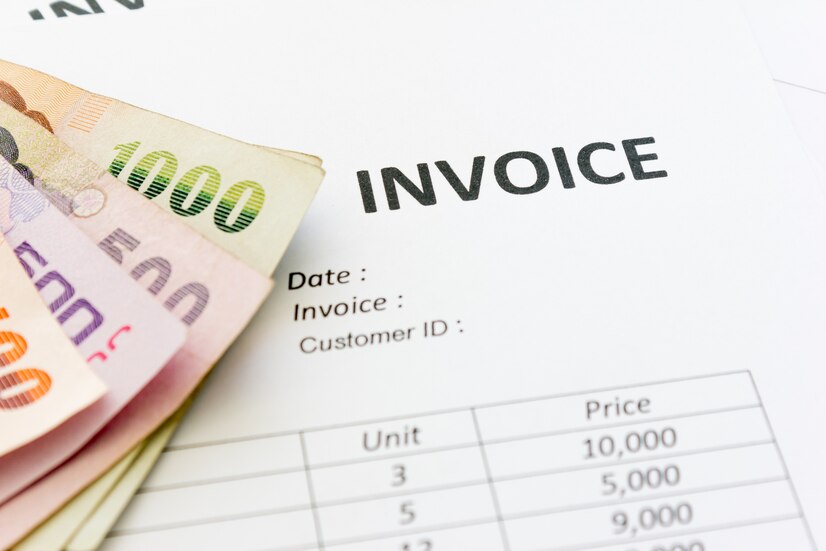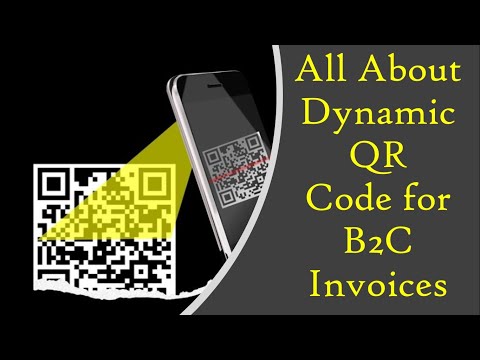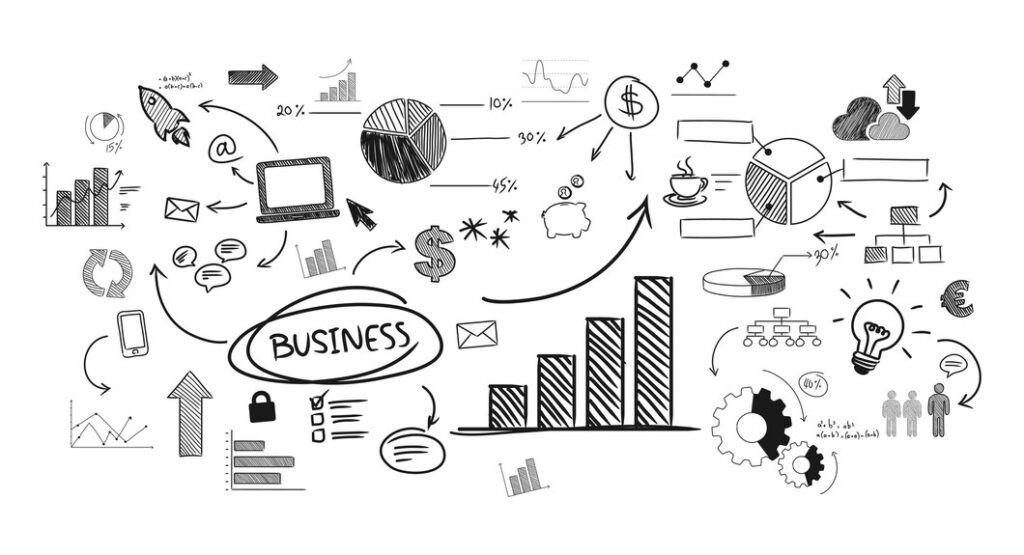Key Takeaway
- B2C e-invoices are essential for transactions with consumers who are not GST-registered.
- E-invoicing under GST automates and standardizes invoice reporting, enhancing tax compliance.
- Dynamic QR codes on B2C invoices provide updated transaction details and support digital payments.
- Businesses exceeding a specified turnover must include QR codes on invoices to avoid penalties.
- SMEs with turnover below ₹500 crores are exempt from generating QR codes on B2C invoices.
Definition of B2C Invoices
B2C invoices are issued in transactions where a business sells goods or services directly to consumers who are not registered for GST (Goods and Services Tax). These invoices are simplified compared to B2B (Business-to-Business) invoices, primarily because they do not need to include the GSTIN (GST Identification Number) of the recipient, since the recipients (consumers) are typically not tax-registered. The primary purpose of a B2C invoice is to document the sale and provide the consumer with the details of the transaction, including the description of goods or services, quantity, per unit cost, total cost, and the tax charged.
What is e-invoicing under GST?

E-invoicing under GST refers to the system where certain businesses are required to electronically generate and report their invoice details on the GST portal. Initially targeted at B2B transactions, e-invoicing mandates the submission of invoices for validation to the Invoice Registration Portal (IRP) which, in turn, assigns a unique Invoice Reference Number (IRN), generates a QR code, and digitally signs the invoice. The process ensures that the invoices are compliant with GST rules, facilitates real-time tracking of transactions by the tax authorities, and simplifies the input tax credit system to reduce errors and fraud in tax reporting.
Purpose of e-Invoicing
The implementation of e-invoicing under GST serves multiple purposes that enhance the effectiveness and efficiency of tax administration in India. The primary goal is to standardize the format of invoices across industries, which simplifies the verification and reconciliation of tax credits across the supply chain. E-invoicing reduces the chances of errors and fraud by ensuring real-time data transmission to the tax authorities, thereby facilitating quicker validation and approval of input tax credits. It also aims to reduce the compliance burden on businesses by automating the reporting process and integrating it directly with the GST portal, thus streamlining tax returns and payments.
Format of B2C GST Invoice
The format of a B2C GST invoice is typically simpler than that of a B2B invoice, as it does not require comprehensive details of the buyer if the buyer is not a GST-registered entity. Key elements included in a B2C GST invoice are:
| Element | Details |
|---|---|
| Supplier’s Details | Includes the supplier’s name, address, and GSTIN (GST Identification Number). |
| Invoice Number | A unique invoice number, not exceeding sixteen characters, in one or multiple series, containing alphabets or digits or special characters like hyphen (-) and slash (/), unique for a financial year. |
| Date of Issue | The date when the invoice was issued. |
| Description of Goods or Services | A clear description of the goods or services sold, including quantity and unit of measurement if applicable. |
| Taxable Value and Tax Rate | The value of the goods or services that is taxable along with the GST rate(s) applied (CGST, SGST/UTGST, IGST, and Cess if applicable). |
| Total Amount Due | The total amount payable including the tax amount. |
| HSN/SAC Code | Harmonized System of Nomenclature (HSN) for goods or Service Accounting Code (SAC) for services, which helps in identifying the nature of goods or services. |
Additionally, if the business turnover exceeds a specified limit, a QR code is mandatory on the invoice to facilitate quick access to the invoice details through digital means. This QR code generally contains essential transaction information like the GSTIN of the supplier, transaction value, and tax amount among others.
💡If you want to pay your GST with Credit Card, then download Pice Business Payment App. Pice is the one stop app for all paying all your business expenses.
B2C QR Code Applicability
For B2C transactions, businesses with a specified turnover threshold, currently set at ₹500 crores as per Indian GST regulations, are required to include a scannable QR code on invoices. This is mandatory and must contain all essential transaction details such as the supplier’s GSTIN, transaction value, and tax breakdown. It facilitates easy verification of invoice details by consumers and assists tax authorities in their compliance and enforcement efforts.
Penalty for Non-Compliance with B2C QR Code for E-Invoicing
Failing to include a QR code on B2C invoices for businesses above the specified turnover threshold can result in penalties under GST laws. These penalties may include a monetary fine, which varies based on the severity and frequency of the violations. Repeated or intentional failures to comply can lead to more stringent consequences, such as higher fines or further legal actions. This non-compliance disrupts the transparency and traceability of transactions, critical for adhering to tax regulations.

What Does the B2C QR Code Contain?
The B2C code included on invoices contains essential information about the transaction that helps facilitate easy and secure verification. This typically includes:
- Supplier’s GSTIN (GST Identification Number): Identifies the issuer of the invoice.
- Transaction Value: The total monetary value of the transaction.
- Tax Amount: Details of the tax charged, broken down into components like CGST, SGST/UTGST, and IGST.
- Invoice Number and Date of Issue: These help in tracking and record-keeping.
- Number of Line Items: Indicates the count of different goods or services on the invoice.
- Unique Invoice Reference Number (IRN): If applicable, provides a unique reference for validation.
This information ensures that all the critical details of the sale are accessible in a compact, digital format that can be quickly scanned and authenticated.
Who is Exempt from Generating B2C QR Codes on Invoices?
In the context of the GST regulations in India, small and medium enterprises (SMEs) and businesses with an annual turnover below a certain threshold are typically exempt from the requirement to generate QR codes for B2C invoices. As of the current guidelines, businesses with an annual turnover of less than ₹500 crores are not required to include QR codes on their B2C invoices. This exemption is designed to reduce the administrative burden on smaller businesses while ensuring that larger enterprises comply with the transparency and traceability requirements of GST.
How to Generate a Dynamic QR Code for B2C Transactions?

Generating a dynamic QR code for B2C transactions involves a few key steps, which can be facilitated by using appropriate software or services that support dynamic QR code generation. Here’s a general process:
- Choose a QR Code Generator: Select a QR code generator that offers dynamic QR code functionality. Many online platforms provide this service, often with options for tracking and editing the information linked to the QR code.
- Input the Data: Enter the necessary transaction details that should be encoded in the QR code. For B2C invoices, this might include the supplier’s GSTIN, transaction value, tax details, and other relevant invoice information.
- Generate and Test the QR Code: Once the data is entered, generate the QR code. It’s important to test the QR code with different devices and QR scanners to ensure it correctly directs to the intended information and is easily scannable.
- Implement Tracking (if needed): If you’re using dynamic QR codes, you can also set up tracking to monitor when and where the QR codes are scanned. This can be useful for marketing purposes and to track the effectiveness of the QR codes in real-time.
- Integrate with Your Systems: Integrate the generation and management of these QR codes into your regular invoicing or sales systems to streamline the process. This ensures that every B2C invoice generated includes a QR code automatically, complying with GST regulations where applicable.
Using dynamic QR codes in this way can greatly enhance the functionality of digital invoices in B2C transactions, providing flexibility and added value to both the business and the consumer.
FAQs
What are B2C e-invoices and who needs to issue them?
B2C e-invoices are digital invoices issued when a business sells goods or services directly to consumers who are unregistered under GST. Any business whose turnover exceeds a specified threshold must issue B2C e-invoices. This type of invoice simplifies transactions by focusing on essential details like the HSN Code and tax amounts without the need for a recipient’s GSTIN.
How does e-invoicing under GST affect B2C transactions?
E-invoicing under GST streamlines the process of invoice generation for B2C transactions by integrating digital payments. It ensures that e-invoice details are standardized and submitted to the GST portal, facilitating real-time tracking and reducing errors in tax reporting. This system simplifies the reconciliation of sales with GSTR-1 Returns.
What are the penalties for not implementing a QR code on B2C invoices?
Failure to include a mandatory QR code on B2C invoices for businesses meeting the turnover requirement can lead to substantial penalties. These penalties enforce compliance, as the QR code contains vital e-invoice details necessary for transparency and facilitating digital payments, crucial for tax compliance.
How does the dynamic QR code benefit B2C e-invoices?
A dynamic QR code in B2C e-invoices allows for modifications post-generation, such as updating payment status or adding new transaction details. This flexibility benefits businesses and consumers by providing a secure and convenient method to access up-to-date transaction information and facilitates digital payments directly through the invoice.
Who is exempt from generating QR codes on B2C invoices?
Small and medium enterprises (SMEs) with an annual turnover below ₹500 crores are exempt from generating B2C QR codes. This exemption reduces the administrative burden on smaller businesses, allowing them to focus on essential operations without the complexities of the e-invoicing system.
What steps are involved in generating a dynamic QR code for B2C transactions?
To generate a dynamic QR code for B2C transactions, first select a QR code generator that supports dynamic content. Input necessary transaction details like supplier’s GSTIN, transaction value, and tax details into the generator. Ensure the QR code is tested for accuracy and functionality. Integrate this system with your sales processes to automatically include QR codes on B2C e-invoices, facilitating compliance with GST regulations and enhancing customer engagement through seamless digital payments.








